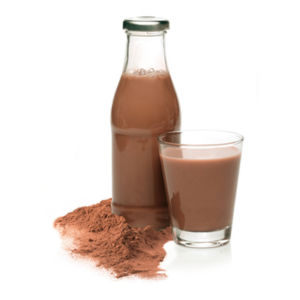 There are many benefits to working with spray-dried dairy proteins such as milk protein concentrate (MPC) or milk protein Isolate (MPI) in ready-to-drink (RTD) formulations; two such benefits are their terrific emulsification properties and their excellent solubility in water. Other benefits include their complete nutrition profile, simplicity to flavor, their clean taste and mouthfeel. However, in order to achieve and maximize these properties when working with MPC & MPI, there are specific steps that need to be taken. These two steps tend to be the root of many developmental and manufacturing errors when developing and producing RTD products:
There are many benefits to working with spray-dried dairy proteins such as milk protein concentrate (MPC) or milk protein Isolate (MPI) in ready-to-drink (RTD) formulations; two such benefits are their terrific emulsification properties and their excellent solubility in water. Other benefits include their complete nutrition profile, simplicity to flavor, their clean taste and mouthfeel. However, in order to achieve and maximize these properties when working with MPC & MPI, there are specific steps that need to be taken. These two steps tend to be the root of many developmental and manufacturing errors when developing and producing RTD products:
- Powder Dispersion
- Adequate Hydration
Powder Dispersion
Properly dispersing powder is the first step. MPC & MPI, as well as protein powders in general, will compete with other ingredients for proper hydration, which is why the first step in formulating a successful beverage products is about ingredient hydration and isolation. One of the biggest manufacturing errors seen is combining all ingredients at once, when in fact isolation of certain ingredients is necessary, namely the dried proteins.
When developing the manufacturing methods for producing products like ready-to-drink beverages it’s paramount to start with a proper high-speed, high shear mixer. A common brand of mixer used is a Tri-Blender® or Likwifier®. Ultimately, the goal of the mixer is to ensure proper powder dispersion throughout the water column. This is why a high speed, high shear mixer works best. Other mixers have been tested (i.e. a mixer with a fast enough agitator). For starters the liquid (water or milk) should be added to the tank first with the mixer then turned on. The liquid should be heated to between 400C – 500C, but not hotter than 500C – this will allow for maximum solvation.
If proper dispersion fails then it is likely that lumps of various sizes will exist. This will create a final product that is not desirable. Some of the consequences may be:
- Protein powder in the center of the lumps creating a displeasing end-product
- Lower protein content on a per serving basis
- Potentially clog any filters throughout the manufacturing process
- Precipitate to the bottom of the package
- An imbalance of sodium phosphate salts used to stabilize proteins, limiting shelf life
Adequate Hydration
Allowing adequate time for protein hydration is the second step.
Now that proper dispersion has taken place it’s time to tackle the next most common error when using MPC/MPI in RTDs: allowing enough time for adequate hydration. What this means is that enough time needs to be allowed for whatever liquid (i.e. water, milk) to fully penetrate and hydrate the spray-dried protein. This process is critical in protein hydration and directly relates to all desired functionality – this step is crucial as the protein is exposed to higher temperatures. This means that during the R&D phase make stages for the addition of other non-protein ingredients (fibers, flavors etc.). Basically, hold the protein mix at a temperature range of between 400C – 500C for at least 10 minutes before adding in other ingredients. We’ve also found that the addition of phosphate salts (dissolved in water) should be the first sequence of ingredients added post initial hydration; this will only help continuing the wetting and softening of the spray-dried proteins.
Upon taking these two major processing steps you’ll find improvements not only in the manufacturing of the RTD, but the overall quality of the product will be positively affected, right down to the shelf life. By separating out manufacturing steps and allowing adequate time for each step to take place, the net impact on product quality, consistency, taste and texture trickles all the way down your wholly satisfied customers.
Get market insight from the experts of AMCO Proteins. To learn more about AMCO Proteins’ full line of protein ingredients and solutions, Contact Us today.

